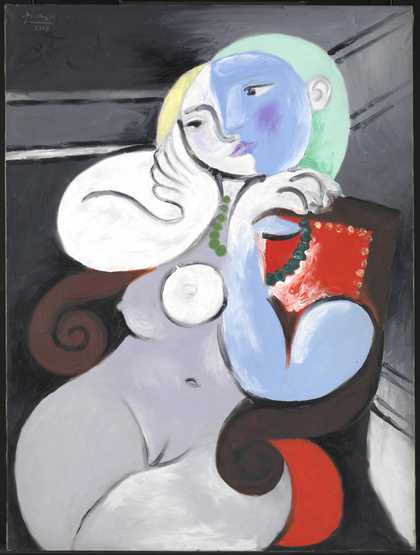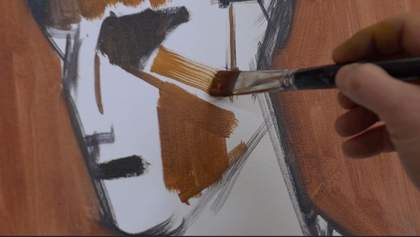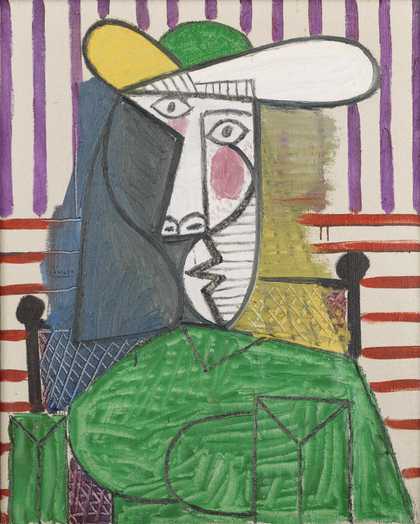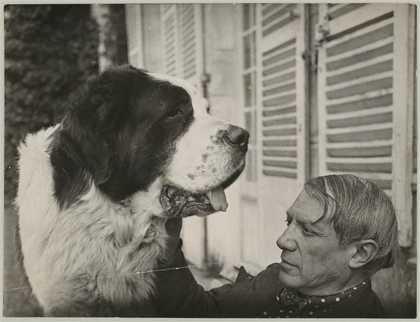
Pablo Picasso with Bob, the family’s Pyrenean Mountain dog at Boisgeloup 1930 musée national Picasso, Paris
1. He was a great animal lover
Pablo loved to surround himself with birds and animals. In general they were exempt from the suspicion with which he regarded his other friends
Françoise Gilot
Picasso’s life, like his art, was filled with animals. His father was a breeder of pigeons and taught his son how to paint them. His love for these birds continued into later life. His drawing Dove of Peace was chosen as the emblem for the first International Peace Conference in 1949. He also named his second daughter ‘Paloma’, which is Spanish for dove.
Dogs feature across Picasso’s work and were constant companions throughout his life too. He owned many breeds over the years, including terriers, poodles, a Boxer, a Great Pyrenees, a German Shepherd and Afghan Hounds. The best known of his pet dogs is Lump the dachshund. The relationship between artist and dog was described as a 'love affair' and Lump appears in a number of Picasso’s paintings. He lived with Picasso until a week before the artist’s death in 1973.
2. He curated his first ever retrospective

Photograph of Picasso exhibition at Galeries Georges Petit, Paris
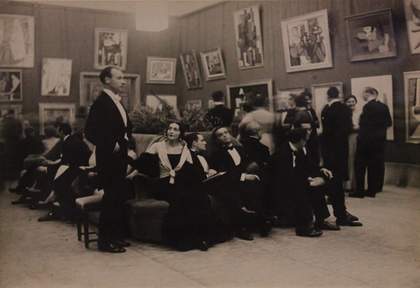
Guests at the opening of Picasso’s exhibition at Galeries Georges Petit16 June 1932. Photograph by Rog André
I feel like I am witnessing a retrospective vision of myself ten years after my death
Retrospective exhibitions of living artists were unusual in the early 1930s; it was almost unheard of for an artist to curate their own. In 1932, Picasso staged the first solo show looking back over his career at the Galeries Georges Petit in Paris. Matisse had exhibited there the year before, and Picasso was keen to do better than his hero and rival.
Picasso personally arranged the art in the gallery, even contributing his own pot plant to the display. He selected works from throughout his career, not displaying any dates and not hanging them in a chronological order, as if to say that all his works were of equal importance and value. The frequent appearance of Marie-Thérèse Walter’s features in his more recent paintings provided the first public clue that a new woman had entered the artist’s life. Yet pride of place was given to a group of paintings that celebrated Picasso’s family, including portraits of his wife and son.
In September, the retrospective travelled to the Kunsthaus Zürich, where it was seen by the psychoanalyst Carl Gustav Jung. He published a scathing review of the exhibition, implying that Picasso was schizophrenic because his ‘pictures immediately reveal their alienation from feeling’. The exhibition was much more popular with the public, but was nonetheless a commercial failure, with no sales in Paris and only one in Zürich.
3. He became a celebrity in his own lifetime
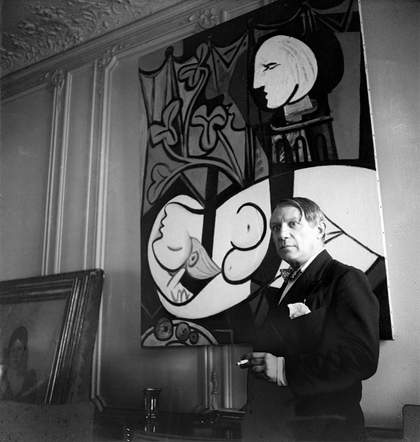
Picasso - rue de la Boétie 1933. Photograph by Sir Cecil Beaton © The Cecil Beaton Studio Archive at Sotheby’s
By the time of Picasso’s retrospective in 1932, critics openly discussed whether he was an artist of the past rather than the future. EIther way, at the age of 50 Picasso was very much an established artist, with Paul Klee calling him 'the painter of today'. That same year he entered the new edition of the Larousse encyclopedia.
In the early 1930s, at a time when much of the rest of the world was suffering from economic hardship caused by the Great Depression, Picasso indulged his expensive tastes. He could be seen in costly woollen suits tailor-made on Savile Row, relaxing in the back of a chauffeur-driven Hispano-Suiza car. 'I am a great master now,' he told collector Jim Ede, 'you have to have a motor car'.
4. He was a fast-paced painter
Nude Woman in a Red Armchair is one of the few large-scale paintings that Picasso painted in the summer of 1932. It is one of a series of portraits that he made of his mistress Marie-Thérèse Walter at his country property at Boisgeloup.
He made no preparatory drawing, and his paint and line flow more sensually than ever. An x-ray of the painting reveals that it was almost certainly executed in a single fast-paced session. On the back of the canvas, Picasso has inscribed the exact date - which makes us suspect that he wanted us to think it had been painted in one day. Whether this was the case, we cannot know for sure.
5. He was more than just a painter
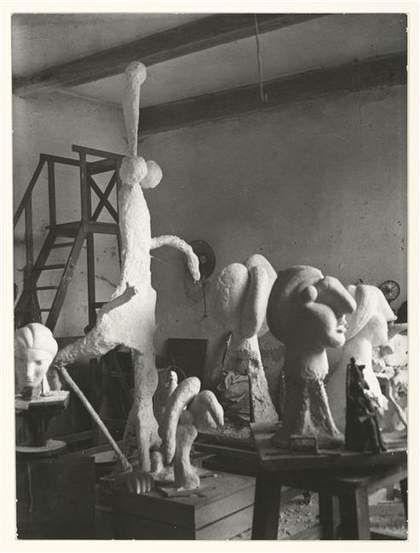
Plaster sculptures by Picasso in the Boisgeloup studio December 1932. Photograph by Brassaï, musée national Picasso, Paris © Succession Picasso/DACS 2018

Pablo Picasso
Cock (1932, cast 1952)
Tate
Picasso was a committed sculptor throughout his career, though for a long time this side of his art was not widely known. In 1930, he acquired a house in Boisgeloup, forty miles outside of Paris. Away from the distractions of city life, it became the ideal place for him to pursue his sculpture work with a new energy. The disused stable became a dedicated sculpture studio where he also experimented with printmaking.
Picasso was also a writer. He collaborated with artist and author Jean Cocteau, composer Erik Satie and Ballet Russes founder Sergei Diaghilev on the ballet Parade. He was also the author of two surrealist plays. Desire Caught by the Tail was first performed as a reading, featuring philosophers Jean-Paul Sartre and Simone de Beauvoir, Picasso himself, and with writer Albert Camus directing. The Guggenheim restaged this in 1988, starring artist David Hockney. Picasso's prose poem The Burial of the Count of Orgaz explores his homeland of Andalucia in a stream-of-consciousness style, and includes characters such as ‘Don Bloodsausage'.
Picasso associated with many literary figures in Paris including Guillaume Apollinaire and Gertrude Stein. However, the photographer Brassaï cattily remarked that nobody ever saw Picasso with a book in his hands.

